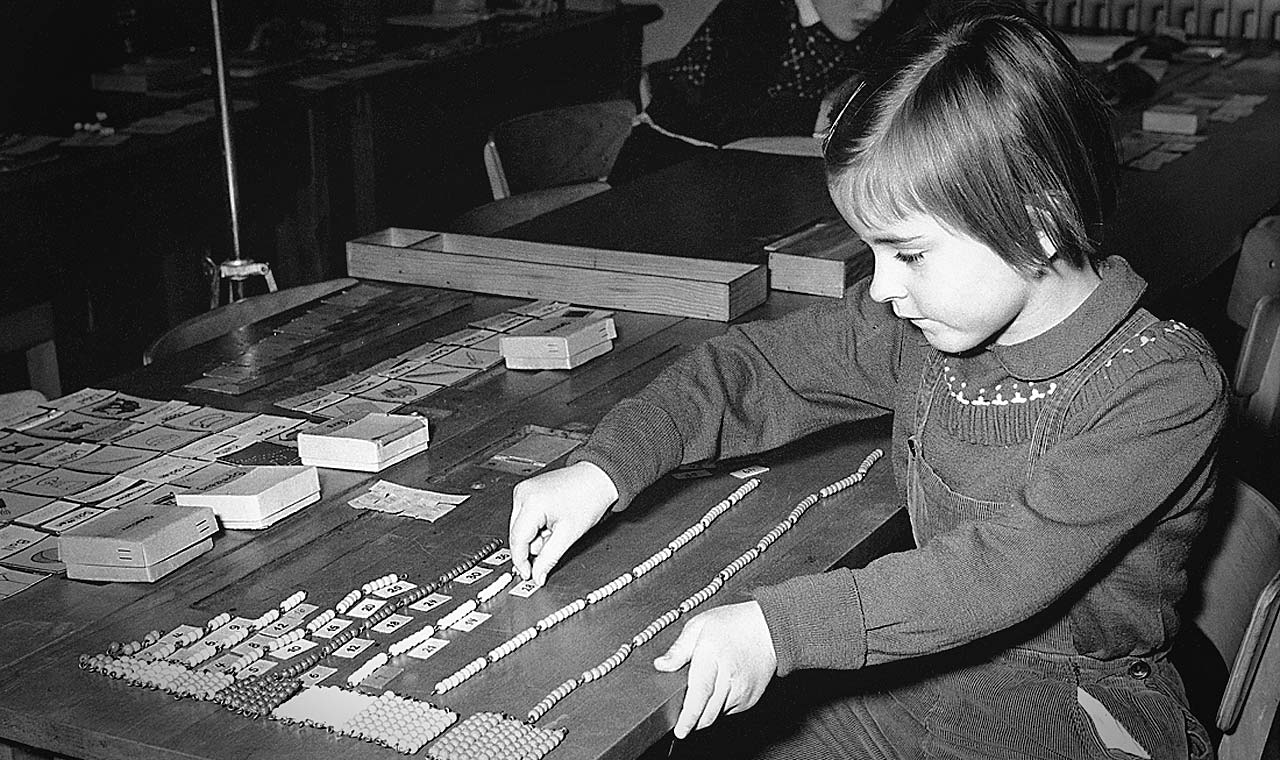Montessori or Not?

What sets a Montessori activity for children apart from any other activity? There are seven principles that need to be taken into consideration when planning a Montessori activity for any age. These principles allow for truly child-led learning that enables us to follow the core of Montessori’s philosophy, “Help me do it myself”.
1 – Follow the Child
The first principle is follow the child. Following the child simply means observing what the child is gravitating towards. This of course is taking place in a controlled environment meaning the guide has intentionally prepared (or is preparing – check out this post on how to get started preparing the environment) the environment and offers age/developmentally appropriate work that the child can access independently of the adult. This means that the activity is not adult guided. It is an activity that the child can complete on their own- imperfectly but on their own! It is one that they will gravitate towards and enjoy. There can be a lot of trial and error here. It is also important to balance what you want to introduce to the child (think experience and order of progression) with their interests. Many times you can incorporate their interests into the order of progression but their interests will grow with experience so don’t be afraid to bring in new experiences and then follow their interests deeper.
2 – Control of Error
This is a MUST in any Montessori activity. This simply means that the child is able to see his/her mistake on their own. It does not require the adult to correct or grade their work. The child can see their error and adjust. A great example of this is the knobbed cylinders or cylinder blocks. There is only one slot for each cylinder. This cultivates a love for exploration and learning. A love for the natural scientific process that is ingrained within the child. It prevents burnout for both the parent and the child as well.
3 – Rich Sensorial Experience
The sensorial experience is not limited to a sensory bin in the Montessori classroom. Instead, it is “everything in the environment. It’s the language the child hears, the scents they’re exposed to, the colors, the light… all of it. (Layla Graham). The whole environment is quite intentional and, in the 3-6 Primary Classroom/Preschool Classroom, Sensorial work is it’s own category that lays the groundwork for mathematics, science, and language! There’s a reason that Montessori called children “sensorial explorers”. They use all five senses to explore and interpret the world around them. We shouldn’t limit that exploration but encourage it and intentionally work to facilitate it through their home and school environments.
4 – Hands on
Children (as well as adults) learn by doing. It is when we actually try something that it begins to click. We can begin to work through and refine the process. My favorite teaching concept is see, do, teach. You see the activity modeled, you do the activity, then you teach the activity. This is repeated over and over within the Montessori Method.
5 – Isolated Skill/Concept
An activity that is truly Montessori will work on one skill or concept at a time, not multiple. The material will be to refine one movement or skill such as pouring as opposed to a busy material that is trying to do all the things at once (or worse, doing it for the child!). As the child grows older, there may be multiple steps to a material or concept but they must be done in order to complete the work.
6 – Free Movement
The child must be allowed to move through the environment independently and select the work he/she is interest in completing. There is not an instructor but a guide in this environment. Children are invited to presentation to learn a new concept and they are not forced into mastery. By having a child centered environment, they are able to be independent, work on what truly is exciting to them at that time, and further explore their own interests.
7 – Concentration
Children can concentrate from a young age when adults are not constantly interrupting them. I’ve even seen my babies concentrate! They may not focus on an activity as long as I am able to, but they do concentrate. In the 3-6 classroom there is an uninterrupted three hour work period that allows for the child to have space to get into an activity and really settle in and concentrate. There may be modeling during this time, but it is never in middle of an activity that has already begun or is capturing their interest.
As I plan an activity, I use these as a check list and ask myself if this activity is meeting all of these principles. Do I need to tweak it? Go with something else? Change directions entirely? It can be easy as a parent to become emotionally attached to the plans we have for our children. It is necessary to give space to working through all of these as well as the why behind bringing out a material or activity at this time.
I hope you find this helpful as you plan your Montessori child’s education at home or are simply creating a more Montessori home environment.
XOXO,
Amanda